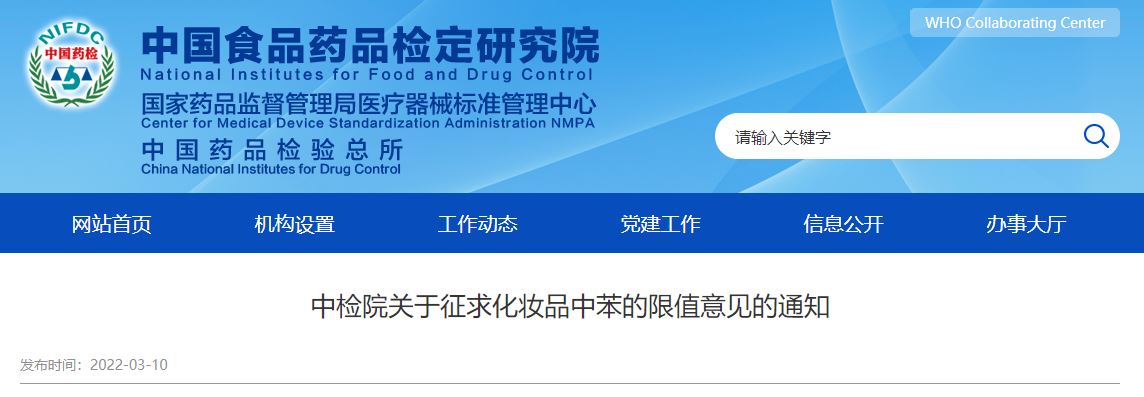On March 10, 2022, China National Institutes for Food and Drug Control has issued a notice on the limit value of benzene in cosmetics for public consultations. The limit value of benzene in cosmetics was proposed to be 2mg/kg according to the results of relevant risk assessment.

Benzene, CAS No. 71-43-2, is the simplest aromatic compound. It is a prohibited component under the Safety and Technical Standards for Cosmetics in China. However, benzene may be brought into the final products along with many cosmetic raw materials, for instance, benzene is used as solvent in the production of carbomer or BHA in certain production methods, but there may be some benzene residuals left. Benzene is a class 1A carcinogen, which may cause potential hazards to human health even if it is slightly brought into cosmetics. Therefore, it should be identified as a dangerous ingredient in cosmetics safety assessment report.
American CIR has evaluated the content of benzene in Alkyl Acrylate Cross Polymer. However, it is believed that the safety of benzene cannot be drawn due to its volatile nature and complex exposure pathways in the production of cosmetics. Under Regulation (EC) 2009/552, benzene shall not be placed on the market or used as a constituent of other substances or in mixtures in concentrations equal to or greater than 0.1% (by weight). But when benzene is used as an organic solvent, or in a mixture, and the residue of benzene is lower than the limits mentioned above, it will not be prohibited to use or place on the market. Moreover, The ICH guideline Q3C (R6) of European Medicines Agency (EMA) sets a limit of 2mg/kg for benzene in medicinal products.
China has never set a limit value for benzene in cosmetics before. The limit of benzene in GB 5749-2006 Standards for Drinking Water Quality is 0.01mg/L. But based on the documents on specifications of cosmetics raw material provided by enterprises, it is quite difficult for cosmetic enterprises to meet the limit set for drinking water. Occupational exposure limits for benzene are set in the GBZ 2.1-2019 Occupational Exposure Limits for Hazardous Agents in the Workplace Part 1: Chemical Hazardous Agents.
In addition, Lu Zhi et al. have evaluated the safety of benzene in cosmetic raw materials and finished products. They believed that when benzene exists as an impurity in cosmetics, it is unlikely to cause local toxicity due to its low content. With the carcinogens assessment method provided the SCCS and based on the limit of benzene for drinking water required by American Environmental Protection Agency, it can be concluded that the highest safe concentration of benzene is 1.717 mg/kg and 1.891 mg/kg respectively, both of which are lower than the limit of benzene in medicines (2mg/kg).
If you have any needs or questions, please contact us at service@hfoushi.com.

